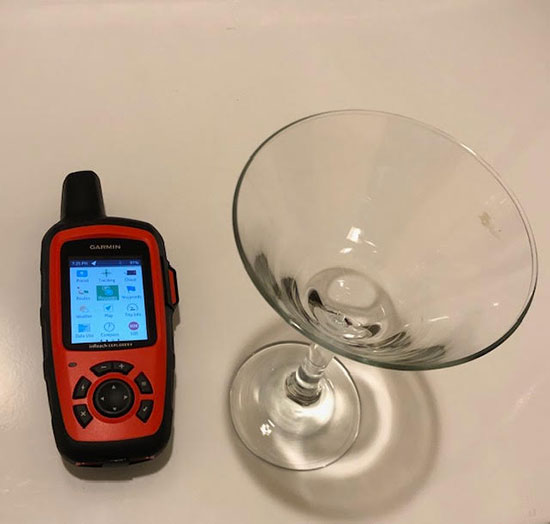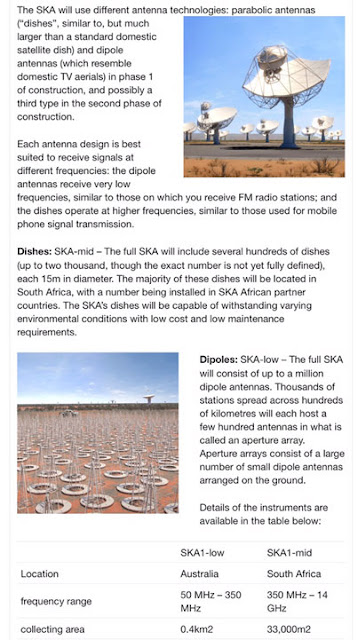Well this week started off with consideration of travelling to the Great Basin National Park (GBNP) to do some dark, really dark, sky observing and have fun in the park too!
Now we have seen the sign indicating the turn off to go up to the many times just outside of Las Vegas, but never recognized why we wanted to visit the GBNP. Then, Airforce Veteran, Vince and four legged friend, Colonel, just mentioned the Great Basin Star Train that is based in Ely, NV and takes folks on a train ride out into the dark skies for a guided star tour. Hmm, that sounds pretty neat! You get a ride on a refurbished set of railcars pulled by a vintage diesel engine. But, the Star Train is all booked up for about a year in advance, so we elected to consider just going up to GBNP on our own. We will keep you posted about our travel plans. So where else do you get to see caves, old Bristlecone pine, a glacier and some really dark skies? Thanks for that thought, Vince!
In the meantime you can check out the other details of the GBNP and the Lehman Caves and the only glacier in Nevada at: https://www.nps.gov/grba/index.htm
 |
| The very dark skies and natural beauty of Great Basin National Park (Source: www.nps.gov/grba/index.htm) |
In looking at where GBNP is and how much of the Nevada desert one has to drive through to get there, we elected to get a satellite phone for use during emergencies and normal GPS type navigation. It turns out that after our recent trip to Chile to view the total solar eclipse there, we heard about OCA Dave Kodama, who also was on a separate tour to Chile, and then decided to spend several days driving around there themselves in a rental truck. We by chance happened o bump into Dave and Jean while we were travelling around Chile, but we did not know that they were planning to go off on their own after our respective tour groups came home. Well, OCA Dave recounted his adventures, at the recent OCA Astroimagers SIG, in their rental truck and how he was carrying a satellite phone for emergency use. They had no mechanical breakdowns in the desert but did need to spend the night in the truck when the road back into San Pedro de Atacama was closed and they were just maybe 4-5 miles from their hotel. The road sign, in Spanish, sort of said that the road will be blockaded at night and you can not pass, but hey it wasn't apparent to these travelers what that actually meant.
So, based on this adventure, we elected to get a satellite phone and signed up for just one month of satellite service for our trip to the Nevada desert. The phone is shown below. The emergency martini glass is shown for scale and it does not come with the phone, but can be purchased separately!
 |
| Garmin satellite phone does remote text and has compass, GPS and emergency SOS button (Source: Palmia Observatory) |
This week also had some radio astronomy news in editions of Science and Nature. First up is some results from Australian Square Kilometre Array Pathfinder (ASKAP) which was able to pinpoint the location of a fast radio burst (FRB) and it relied on just a single millisecond pulse of radio waves. The source and nature of FRBs is sill unknown, but now that their location can be identified their nature will be able to be more easily investigated. Only interferometer arrays with kilometer long baselines have the resolving power to find and identify these small radio sources.
 |
| Pinpointing the location and possible source of a FRB with ASKAP (Source: Emily Petroff, Science, 9 August 2019) |
Like you, I wondered what is this ASKAP telescope? Well after a little bit of internet searching we find that it is one of the largest radio telescope arrays and is located in western Australia. Check out a photo below from the main website: www.atnf.csiro.au.
The array is made up of 36 dishes each 12 meters in diameter. The array operates as an interferometer and can image distant radio sources with very good angular resolution because of the long baseline between the individual dishes.
 |
| ASKAP Array in western Australia (Source: www.atnf.csiro.au) |
Now we have posted in this blog many articles before that covered the Epoch of Reionization. You can go back and look at those posts by scrolling through the various postings by date or use the "search" feature on the main website to search by topic. But, this figure taken from Davide Castelvecchi, in 15 August 2019 Nature article presents a good graphic representation of the early universe.
You can see in the figure below how atomic hydrogen emission originally at about 1240 MHz or 21 cm wavelength, is redshifted by the expansion of the universe and then is measured here on Earth today in to the lower radio frequency ranges between say 70-300 MHz. These measurements today then tell us about the conditions that were existing way back then, less than a billions years after the big bang. This whole era and investigation follows the history of hydrogen atoms and stars and when the hydrogen was neutral and when it got ionized by the young star's light and the whole era can tell us a lot about the history of the universe. Pretty neat!
 |
| The redshifted spectrum from EOR shows up now in the radio (Source: Davide Castelvecchi, Nature, 15 Aug 2019) |
The Nature article described how the Murchison Wide Area Array was going to be used to make measurements from the EOR. So, now we are left wondering what is the Murchison Wide Area Array (MWA)? Well again after a little bit of internet searching we find some good descriptions of the MWA with much more detail at: www.mwatelescope.org.
MWA is located in western Australia and consists of 256 tiles of antennas with each tile composed of 16 dipole antennas as shown below. Wow what beautiful dark skies and the southern hemisphere! The MWA and other radio observatories are located in very remote regions that happen to be optically dark but the main requirement is that the regions be radio dark or quiet.
 |
| One 16 dipole tile out of 256 more tiles in the Murchison Array (Source: www.mwatelescope.org) |
One of the biggest radio telescope arrays to be coming online in the next decade is the Square Kilometer Array. It is yet to be built and will be split between locations in South Africa and also Australia. The array will consist of many parabolic dishes and many dipole arrays. Each technology is selected to cover a particular radio frequency range associated with the Epoch of Reionization. For more details on the SKA, check out the main website at: https://www.skatelescope.org/
The SKA will include many dishes and something like a million dipole antennas. Wow! It is amazing that there are still enough radio quiet regions on the Earth where these types of measurement will be done.
 |
| The SKA with thousands of antennas will come on line in the next decades (Source: www.skatelescope.org) |
 | |
|
So the "Eureka" moment for me was that the stress energy tensor, called "T" in most GR textbooks, and other tensors like the electromagnetic tensor, called "F" in most textbooks, can be represented by having either upper superscript indices or by lower subscript indices or a mixture of upper and lower indices. The all represent a different version or view of the same basic physics and each can be converted into the other by appropriate manipulation with the Minkowski spacetime metric. The other significant issue is how the tensors can be manipulated to show how observers travelling at different locations and velocities would measure the same tensor field. For example, if astronomers measure the stress energy density around some distant galaxy, you must take into account the relative velocity between us and the distant galaxy. The amount of measured energy will be different depending on who does the measuring because of the velocity difference between the observers. This is where the observers relative velocity, identified as u with superscript alpha, can be used to calculate what the actual stress energy tensor would be if the measurement were made by an observer located in the remote galaxy. This is a key thing because it is in the local environment where all of the astrophysics is actually happening. So it was a great insight for me to finally realize how to manipulate these tensors to account for different observers and their measurements. After all, science to be science needs to be independent of any one particular observer no matter where ever they are located in the universe!
 | |
|
While reviewing the Gravitation textbook, this interesting chart summarizing some actual data, which shows the validity of Kepler's Third Law of orbital motions, might be of more interest to casual backyard astronomers. Remember this law is that the product of orbital period squared times the cube of the semimajor axis (in some common units) is a constant for any planet in orbit around the sun or any object, like a moon or satellite. The chart below shows this law for first of all planets around the sun, then shows the case for moons in orbit around Jupiter and then finally shows the case for satellites in orbit around the Earth. Note how for each of these cases the product of the square of the period and the cube of the semimajor axis is a constant. The value of the constant depends on the units chosen and the mass of the center of gravity, such as the sun in the first case and Jupiter and the Earth in the 2nd and 3rd cases.
 |
| An example of Kepler's Third Law (Source: Misner, Thorne & Wheeler, "Gravitation") |
So, Kepler's third law tells a lot about the orbit of a planet, it does not refer to the self orbital or self rotation properties of the planets. Check out this neat graphic showing the orientation or the planet's rotation axis and the period of rotation. Most planets rotate and line up with their motion around the sun. But some oddball planets like Venus and Uranus seem to have been knock off kilter. Even dwarf planet Pluto shows a rotation axis way off from the galactic rotation plane. Aren't observations such as these indicative of some serious collision in the early history of the solar system? Yes, I think so too! And Pluto and its Kuiper belt companions tells us a lot about other details of the formation of the solar system. Anyway, thanks to Dr. James O'Donoghue for tweeting this figure!
 |
| Axial tilts of the planets, mostly line up, but there are oddballs! (Source: Dr. James O'Donoghue, @physicsJ) |
Finally, we should give a shout out to the Indian Chandrayaan 2 team for successfully arriving at lunar orbit on August 20. The next nail biting event will be on September 7 when the lander tries to be the fourth country to every land a spacecraft on the Moon. Congratulations and Good Luck, Chandrayaan 2!
Until next time,
Resident Astronomer George
Be sure to check out over 300 other blog posts on similar topics
If you are interested in things astronomical or in astrophysics and cosmology
Check out this blog at www.palmiaobservatory.com

No comments:
Post a Comment